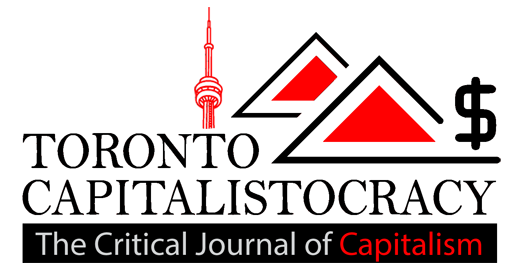Business
Sleep-tech Entrepreneurs Seek to Put Insomnia to Rest

If you are reading this at 3 a.m., chances are that James Proud wants to put you in a deep slumber.
As the inventor of the sleep-tracking device Sense, Proud has enjoyed heady success in the quickly growing sleep tech field: Sense’s 2014 Kickstarter campaign raised about $2.4 million even though the goal was only $100,000.
One of Proud’s business partners is Arianna Huffington, who stepped away from her media empire to be the queen of lifestyle wellness.
“I’m fascinated by helping people live better,” Proud, 25, said. He is a British citizen who came to the United States via the Thiel Fellowship, which gives entrepreneurs $100,000 for skipping college. “And sleep is the foundation of everything. So it’s the best place to start.”
Insomnia and other temporary and recurring sleep disorders affect 50 million to 70 million Americans, according to the National Institutes of Health, and the effects only worsen as people grow older. Technology, while still nascent, is an alternative for those who do not want to take sleeping pills, which can be highly addictive.
Sense is the first product offered by Proud’s 50-employee company, Hello, based in San Francisco. It is sold on Amazon and will soon appear in Target and Best Buy stores. To finance Sense, Proud has raised over $40 million from backers like Allen & Co. and Temasek Holdings, owned by the Singapore government.
Like many other tech devices that monitor every twitch and turn of the human body, Sense uses sensors to collect reams of data. The information is then uploaded to a smartphone app that analyzes sleep cycles. An accelerometer about the size of a quarter attaches to a pillow and tracks tosses and turns. And a bedside hub, shaped like a ball, tracks sounds, light and temperature in a room. It glows green when sleep conditions are optimal.
“You can fall into bed drunk and it still works,” Proud, a self-taught programmer, said.
Sleep technology products range from the basic app to the esoteric. The Sleep Shepherd headband, invented by a professor whose daughter had a sleep disorder, monitors brain waves while the wearer sleeps. Noise-cancelling headphones pipe in sound. Other devices also emit light, some mimicking sunsets. They join hundreds of downloadable apps, like Sleep Cycle and SleepBot, which track every sleep tic.
All are trying to solve an age-old problem with new technologies that experts say are still mostly unproven.
“Most of these apps and wearables don’t have good-quality research that shows they improve sleep,” Dr. Neil Kline, a representative of the American Sleep Association and a sleep specialist, said. “It takes years to do good research. And a lot of these technologies just came out.”
Yet, experts agree that the market is huge and important. About half the U.S. population will have insomnia on any given night, Kline said.
Technology is being applied to difficulty in sleeping caused in an increasing number of Americans by the beeps and Day-Glo lights of tech devices.
Insomnia is also proved to cause a litany of problems, such as deadly motor vehicle accidents, heart disease and difficulty in concentrating. According to a RAND Corp. study, sleeplessness costs the economy up to $411 billion (U.S.) a year in lost productivity.
“A huge slice of society would be interested in this technology,” Kline said.
After his own sleepless nights, Matteo Franceschetti decided in 2014 to start his sleep tech company, Eight, named after the optimal hours of sleep for humans. Franceschetti, an Italian-born lawyer, attacked sleep from a different angle: by making mattresses smart.
The company invented a system that tracks time awake, breathing rate and number of tosses and turns through a mattress cover embedded with sensors. An app then “grades” users’ sleep, allowing them to adjust their sleeping habits.
“We provide insight to users,” said Franceschetti, a serial entrepreneur who started two clean-tech companies in the last several years. “It’s partly education.”
Eight, based in New York, now has 17 employees. It has raised $6.5 million so far from Y Combinator, Comcast Ventures, Azure Capital Partners and others.
“Everyone knows about nutrition and fitness,” Azure Capital Partners general partner Paul Ferris said. “Sleep is the third pillar.”
The rapid rise of wearable fitness trackers like Fitbit, he added, helped set up a firehose of data that consumers could harness to track behaviour.
Early adopters like Alex Muir, a tech support analyst who works at a New York private school, are helping test these early sleep technologies. Last year, he contributed $199 to Eight’s Indiegogo campaign, and got the company’s smart cover, hub and app.
“Eight is helping me identify what’s going on with my sleep,” he said. “When it’s colder, I get a better night’s sleep, and I can see that in the app.”
Muir acknowledges that technology alone can’t solve problems with sleep.
“It can provide a baseline of information, though,” he said.
Some who study sleep, however, say sensors and technology do not necessarily solve the underlying problems of insomnia.
“Sleep sensors are feeding back inaccurate information,” Hawley Montgomery-Downs, a sleep expert and West Virginia University associate professor of psychology, said. “They’re telling people they sleep better than they do.”
Additionally, she said, no federal regulations or standards govern the sleep tech niche.
“The industry is screaming for grown-ups to come along,” she said. “But sleep is sexy and lucrative. So people need to ask questions about empirical evidence for these apps.”
Experts add that sleep apps also collect lots of data that is not then interpreted.
“The devices can show you when you’re awake,” Kline said. “But they don’t tell you why. So the technology can’t help consumers fix all their sleep problems.”
In the sleep field, wearables may be the toughest sell.
“People don’t want to wear wearables at night because most people take technology off,” Proud said, who also tried out his product, Sense, as a wearable. “Silicon Valley is arrogant and gets it wrong sometimes.”
Barak Kassar’s experience with a wearable is a case in point. When worn at night, it gathered sleep data and sent it to an app.
But Kassar quickly found out that the data collected wasn’t useful. He learned “that I wake up in the middle of the night, which showed up on the graph on my phone,” he said. “But I already knew that.” Now he wears the modernistic-looking device as jewelry.
However, recent research does show that online cognitive behaviour therapies can help restore sleep. After Peter Hames developed insomnia, his doctor in England prescribed sleeping pills.
“Drugs have had a monopoly on evidence-based health care,” Hames said. Instead, he turned to a course in cognitive behaviour therapy developed by an expert, which cured him in six weeks.
So Hames and others founded the digital health startup Big Health and created Sleepio, an online sleep improvement program that uses a virtual therapist. Cognitive behaviour therapy was shown to have good results in peer-reviewed trials in Britain and elsewhere. And a report in the JAMA Psychiatry journal found that insomniacs could benefit from cognitive behaviour therapy.
So far, the company has raised $15 million from backers like Kaiser Permanente Ventures and Octopus Ventures, based in London. It has a 25-person team, including three clinical researchers. Clients include big employers like LinkedIn and Comcast, which pay for a year’s access.
“We synthesize the world’s best experts,” he said. “Other apps have been toys, not true medicine.
Business
Beauty Week is back at Hudson’s Bay in Toronto and it’s time to get glam

Beauty enthusiasts rejoice! Beauty Week at Hudson’s Bay is back in Toronto for another year. It’s time to stock up on all of your fall essentials and, maybe discover some new ones.
From Friday, August 18 to Sunday, August 27, you can expect a truly elevated beauty experience in-store with incredible special offers, limited-time gifts, and exciting activations.
If you’re a diehard beauty lover, you’ll already know that Hudson’s Bay is the place to shop thanks to its extensive range of over 195 skin and makeup brands from both luxury labels and masstige brands — including Tata Harper, Estée Lauder, YSL, Nars Cosmetics, Bobbi Brown, and so much more.
Throughout The Bay’s Beauty Week, visitors can take in some at-counter activations and interactive expert-led tutorials, where there will be chances to get makeup touch-ups from top-tier brands, try a spritz of the most alluring fragrances, and sample tons of new products.
This year’s Beauty Week highlight is the ‘Best in Beauty’ tote, a meticulously-curated selection of 30 deluxe samples from an array of top-tier brands like Dr. Barbara Sturm and Shiseido spanning skincare, fragrance, and makeup — all in a super sleek bag.
The tote, which is valued at over $300, is retailing for just $39 and is a fantastic way to explore new products (without breaking the bank). However, there is a limited quantity, so if you want to get your hands on one, you’ll need to be fast.
Wondering exactly what Beauty Week’s free gifts with purchases entail? If you spend over $95 at Lancôme, you will receive a six-piece set valued at $130. Or, you can get an Estée Lauder gift valued at $170 with purchases over $80. (And that’s just to name a few.)
If you’re a Hudson’s Bay Rewards member, you’ll also get $20 in Hudson’s Bay rewards when you spend over $100 on beauty.

Business
The Canadian Armed Forces are hiring for several non-combat military jobs

The Canadian Armed Forces (CAF) have several non-combat jobs, some of which do not require a college degree or past work experience.
Life in the forces has several benefits, such as paid education plans (college, university and graduate-level programs), 20 paid vacation days, health and dental coverage for you and your family, maternity and paternal leave, and pension plans. You can learn more about the benefits in detail here.
And to make it easier to gauge if you qualify, the listings also include related civilian jobs to see if it’s your ideal role.
Financial services administrator
Related civilian jobs: Financial records entry clerk, financial manager, accounting technician, bookkeeper, budget officer, cashier clerk, business planner technician, and verification manager.
Description: You’ll help budget resources for all military activities besides providing financial assistance.
Education: You need to have completed Grade 10.
Duties: As a financial services administrator, you’ll be responsible for bookkeeping and managing budgets. You’ll also provide support in accounts payable and accounts receivable.
Work environment: Those in this role work at CAF bases, on ships or overseas. You might also be expected to help special operation units, recruiting offices, schools, and medical organizations.
Postal clerk
Related civilian jobs: Mail clerk, mail sorter.
Description: You’ll provide postal services to members and their families at bases and establishments.
Education: Grade 10. No previous work experience or related career skills are required.
Duties: As the postal clerk, you’ll handle mail duties.
Work environment: Besides a postal office, you may work on a ship or a mobile postal van. You might be expected to serve with Royal Canadian Navy, the Army, and the Royal Canadian Air Force in Canada and abroad.
Dental technician
Related civilian jobs: Dental assistant, dental hygienist.
Description: You’ll be helping dental officers provide dental services to CAF members, their families, and dependents.
Education: Level II dental assisting diploma from an accredited college or a National Dental Assisting Examining Board (NDAEB) certificate.
Duties: Those in this role will be responsible for various responsibilities, including disinfection and sterilization of dental equipment, applying rubber dams, placing cavity liners, and controlling bleeding. In addition, you’ll assist in laboratory procedures like creating casts, custom trays, and mouthguards.
Work environment: This role will require you to work in a military dental clinic, a Mobile Dental Clinic, an Air Transportable Dental System, or onboard a ship. You might be expected to work on a base in Canada or other operations in other parts of the world.
Human resources administrator
Related civilian jobs: Records administrator, data entry supervisor, receptionist, office manager, executive assistant, payroll clerk, and information management technician.
Description: Provide administrative and general human resources support.
Education: Grade 10. No previous work experience or related career skills are required.
Duties: In addition to human resources administration and services, you’ll be handling pay and allowances, managing automated pay systems, and maintaining personnel records.
Work environment: HR administrators work at all CAF bases in Canada. They also work on ships and overseas to support the Canadian Army, Royal Canadian Navy, or Royal Canadian Air Force operations.
Medical assistant
Related civilian jobs: Emergency medical responder, ambulance and first aid attendant, registered nursing assistant, licensed practical nurse, and hospital orderly.
Description: Successful candidates will help treat the sick and injured in CAF units. You’ll be assisting and supporting nursing and medical officers.
Education: Minimum of Grade 11 biology, Grade 10 physics or chemistry, and Grade 10 math.
Duties: You’ll provide initial care and essential life support treatments in trauma cases. You’ll help with health assessments (hearing and vision tests, perform basic lab procedures, etc.) and initiate and manage medical records and reports. You’ll also be expected to provide support and first aid during training exercises.
Work environment: Medical assistants may serve with the Royal Canadian Navy, the Royal Canadian Air Force or the Canadian Army as part of the Canadian Forces Health Services Group. Those in this role are exposed to the same risks as the forces they support.

Business
Porter’s new loyalty program promises to match Air Canada’s Aeroplan status

Porter Airlines is once again stirring the pot among Canadian airline rivals, now going after Air Canada’s Aeroplan members by offering to match their loyalty status to an equivalent of their own.
The beloved airline, which recently ranked as having the best cabin service in North America, challenged the competition for the second time this year, after previously deploying a similar tactic against WestJet in the spring.
Earlier in April, Porter presented customers with a limited-time offer to match the loyalty status of WestJet’s patrons with VIPorter levels.
Now, they’re offering Aeroplan members to seamlessly transition to an equivalent VIPorter Avid Traveller status based on their existing membership tier.
Members can then take advantage of an array of travel perks that come with flying Porter, including seat selection, baggage, and flight changes.
For those currently holding an Aeroplan membership, there are two ways to acquire the Avid Traveller status for the rest of 2023:
Status-Based Match:
- Aeroplan 25K members = VIPorter Venture
- Aeroplan 35K members = VIPorter Ascent
- Aeroplan 50K, 75K, and Super Elite = VIPorter First
Flight Segments-Based Match:
- 5 flight segments = VIPorter Passport
- 8 segments = VIPorter Venture
- 17 segments = VIPorter Ascent
- 28 or more segments = VIPorter First
Members will have to first submit their applications on Porter’s website. Registration will remain open until September 6, 2023.
In order to maintain their membership level through 2024, customers will have until the end of 2023 to reach the following reduced qualifying spend (QS) targets:
- Passport = $500 in QS
- Venture = $750 in QS
- Ascent = $1500 in QS
- First = $2500 in QS
Over the past year, Porter has launched an aggressive expansion strategy, including everything from introducing longer flights on newly-purchased jet planes flying out of Toronto Pearson, free WiFi, and a new all-inclusive economy experience.
With Canadians losing both Swoop and Sunwing as WestJet incorporates both into their mainline business, Porter’s direct competition is welcome to keep prices competitive.




